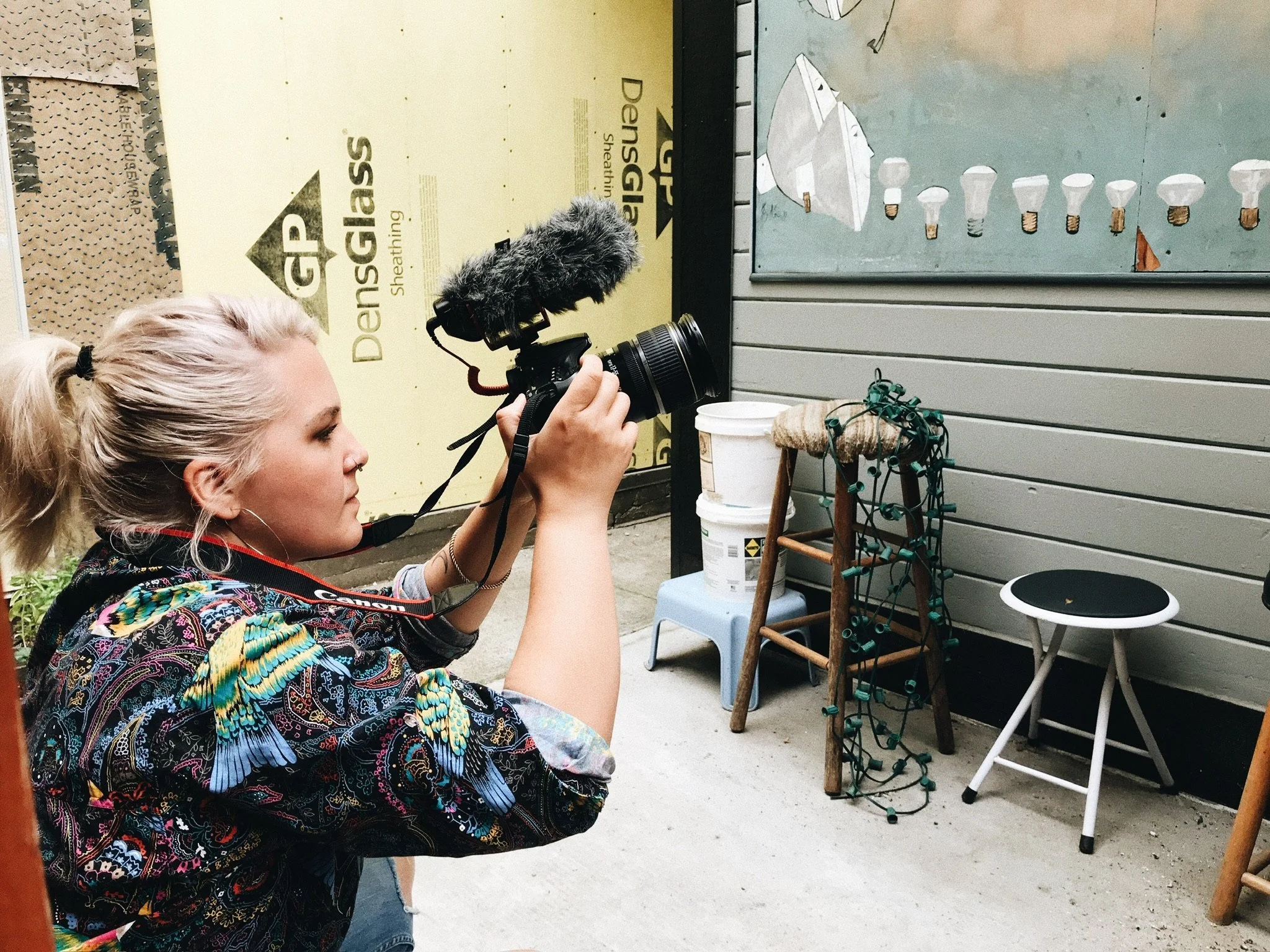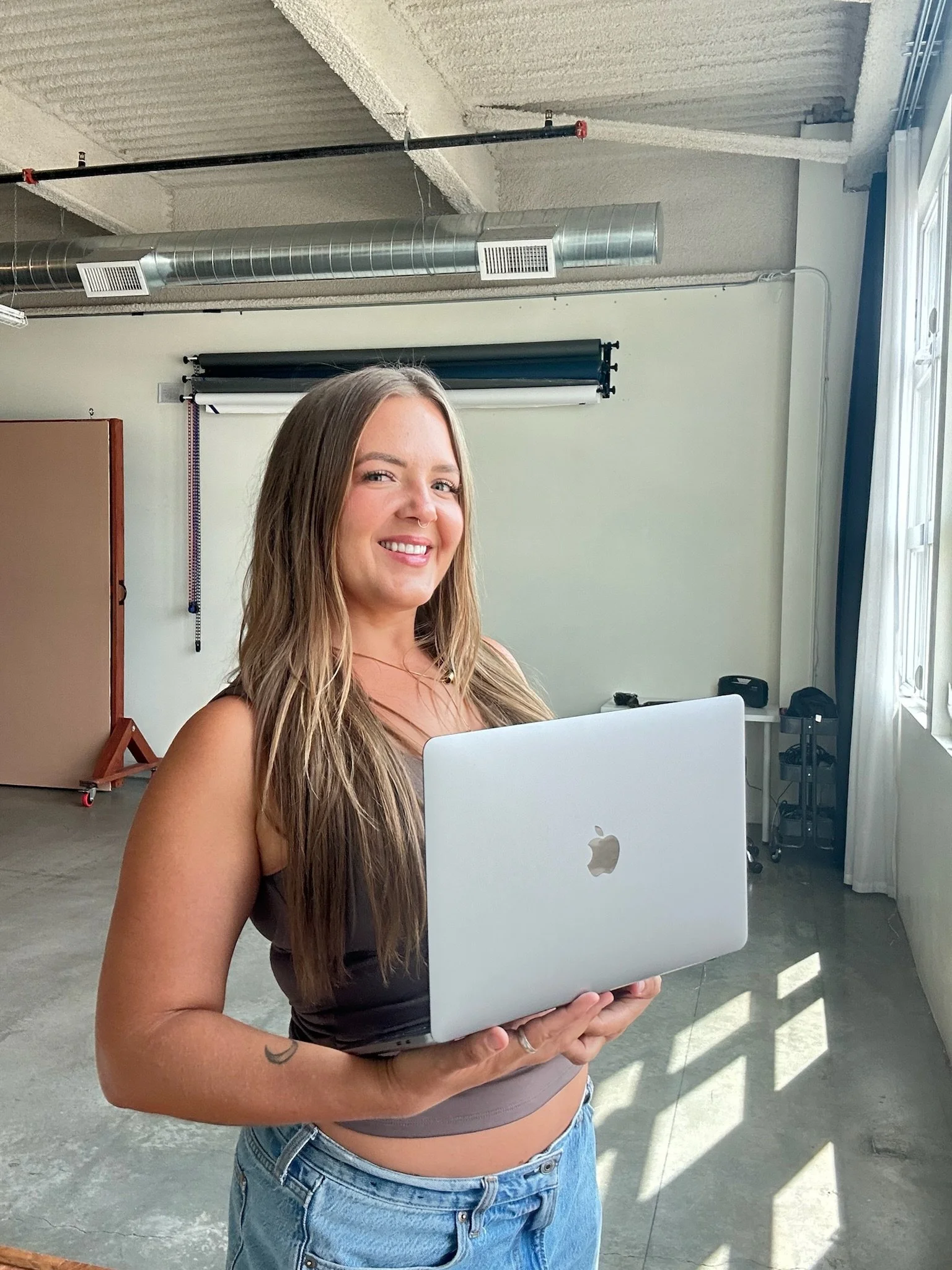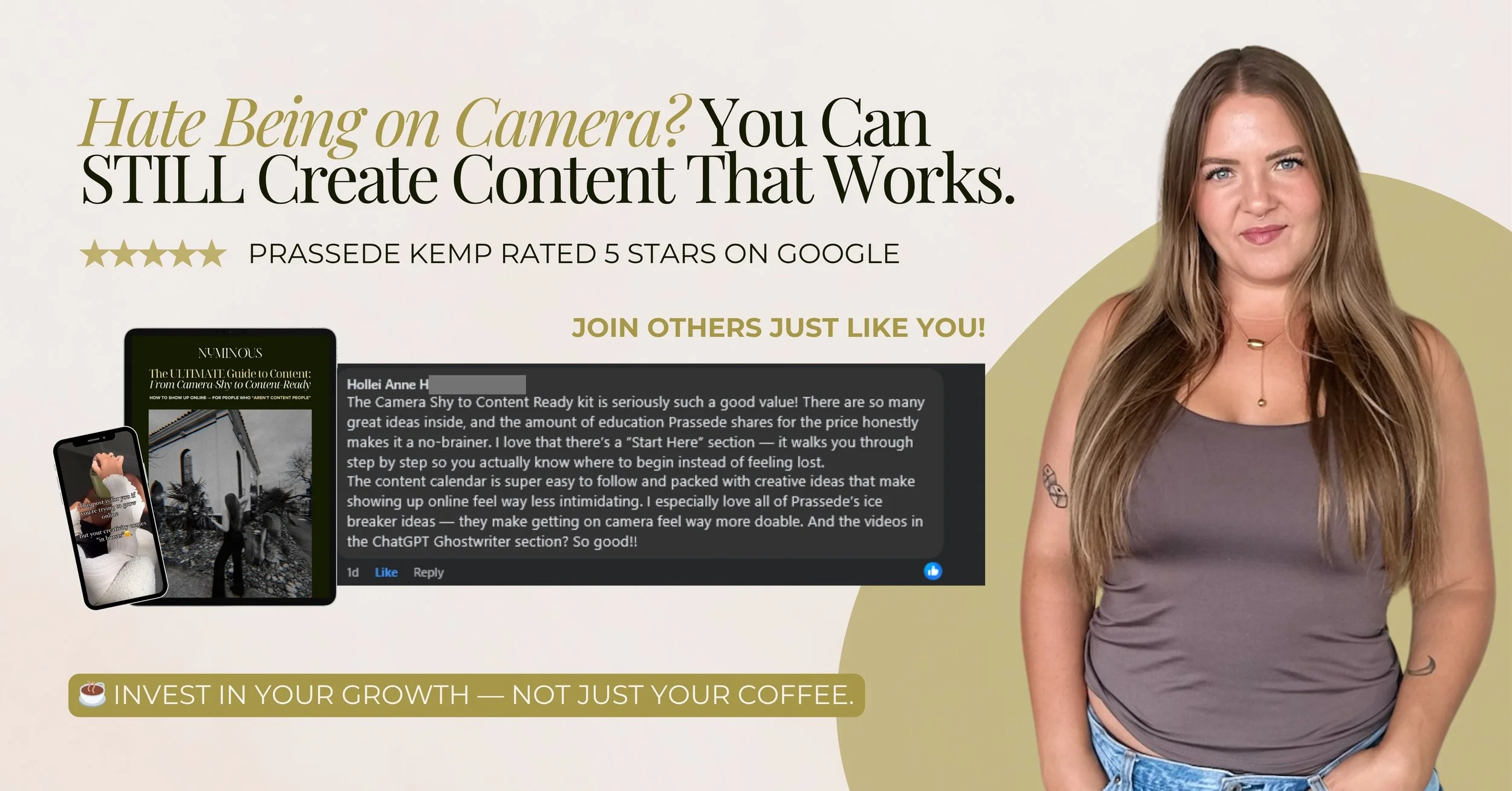YOUR FEAR OF BEING PERCEIVED IS A LOAD OF CRAP
Not many people know that I trained to be a classical singer from the time I was four to the time I was twenty-one. I stood onstage almost every day, all alone, to sing in Italian, German, or French, but when it came time to make the decision to commit my life to it (in my early 20’s), I mysteriously developed a crippling case of stage fright—perfectly paired with a well-timed identity crisis that had me questioning everything I’d been training for two decades to do. The irony isn’t lost on me. My whole life had been building toward being perceived, and the moment it mattered most, I froze.
So I walked away. Forever.
Some years later, I started a business where it became my job to drag other people into their limelight. To spot what was magnetic about them, to help them say it out loud, to push them past the part of themselves that wanted to stay safely invisible. I became an expert at hacking their brains—naming the fear, finding the workaround, building systems that pulled them forward even when they wanted to retreat.
But me? I was still pacing outside my own locked door.
I covered that up neatly. I called it imposter syndrome, perfectionism, fear of being seen (sound familiar?). These were just tidy labels—protection mechanisms that gave me permission to stop moving. My brain had an equation:
Try exposing thing → Feel afraid → “Oop! I must not be capable” → Defer indefinitely.
I thought that was the end of the story. Until this year (almost 15 years later), when I got real sick of my own hypocrisy…If I could build a whole career dragging other people through the door, what excuse did I have to keep standing outside my own?
WHEN YOU SPOT THE PATTERN, YOU CAN HACK IT
The thing is, when you’ve spent years observing fear in other people, you eventually notice that the story is the same every time. People hit a wall, they mistake the wall for the end of the road, and they turn back. But the wall isn’t a wall at all—it’s a door.
Fear is not a verdict. It’s just a threshold.
And thresholds are meant to be crossed.
In my business I’ve always had the ground to experiment with others but in the last 2-3 years I started focusing more on experimenting on myself. Watching my patterns like I was a character in a movie, third person style, trying out tiny hacks to see if I could work around, and eventually rewire my brain.
Here’s an example that has nothing to do with fear but is still fun. For most of my life, I’ve never been one to make my bed. I made it sometimes, but never consistently. I didn’t really buy that it was a daily habit of the top 1%. Personal discipline wasn’t enough motivation; the reward of a tidy bed felt too small. My bar for dopamine was set higher.
I wanted to be someone who made my bed though. So I approached the wall I’d created to turn it into a threshold. If discipline, personal development, or tidiness weren’t big enough motivators - what was? Beauty and joy! I realized beauty could be the reward. I bought a new duvet cover, some pillowcases, re-purposed forgotten throw pillows—and suddenly, the act of making my bed transformed. I wasn’t doing it for discipline anymore; I was doing it for delight. The end result made me happy enough that the act became a ritual. Now, every morning, I easily spend sixty seconds creating something beautiful. Beauty led to discipline, then leading to the type of person I wanted to be.
That’s the exact approach I’ve taken with fear. You don’t need to erase it. You just need to reroute it. Reframe it. Find a way to walk around it.
To just open the door.
THE YEAR I WALKED THROUGH
This is the year I’m forcing myself through. Without a lot of grace and with nearly zero perfection—but forward all the same. I’m doing it through messy action that feels attainable to me. Luckily I know exactly how to do this because I’ve been strong-arming other (willing) test subjects for almost a decade now. My approach is what I call the “baby step”. Things that feel precedent to fully-embodied fearless presence, but may not be my final form. Baby steps that I feel I can access now that will help me build resilience in being perceived—Here’s how:
Public speaking. I started saying yes to being on stages again, reminding myself that my voice doesn’t implode just because people are listening. I get a real human response to my presence but can still experiment without the threat of the limitless eyes of the internet.
30-day posting challenge. I committed to showing up online every single day, building tolerance to being perceived in real time. Did I love everything I posted? No, but I didn’t delete it.
Hiring accountability. I brought on a social media manager—yes, even as an agency owner—because sometimes you need someone else watching to make sure you don’t squirm out of your own visibility.
Writing more. I leaned into publishing messy, imperfect drafts. Quantity over “perfect” quality. This allowed my team to see my mind more clearly, allowing them to work better on my behalf. I had to sit in the discomfort of exposing and exploring my own story.
Filming YouTube videos with minimal editing. No overproduction, no hiding behind polish. Just me, talking. Forcing my brain to accept “good enough” and move on. They’re choppy, but they’ll get better.
And it’s working. I’m no longer treating fear like it’s the end of the road. I’m treating it like the bed I now make every morning. For years, I couldn’t sit with the need to move through it, or fully even see the impact it had on my life. But when I made it beautiful and joy-filled, when I turned it into a ritual worth repeating, suddenly it became effortless.
Visibility is the same way. You don’t eliminate the fear; you reroute it. You design rituals and systems that make moving forward more rewarding than staying stuck.
SHADOW WORK, FULL CIRCLE
Here’s the shadow-work kicker: for years, I thought my story ended the day I quit singing. I thought the stage fright won. But really, all those years of helping clients through their own fears was me rehearsing for this. I had been hacking their brains because I needed to learn how to hack mine.
And the truth is, stepping into visibility now feels a lot like stepping back onstage—only this time, I’m not singing Verdi. I’m building a business, a community, a body of work. And instead of running from the spotlight, I’m finally willing to walk through the door.
DON’T LET YOUR BRAIN WIN
Your fear of being perceived is crap. It’s not who you are. It’s not proof you’re incapable. It’s just a door you haven’t opened yet.
If fear of being perceived has ever felt like it owns you, here’s how to shrink it down until it’s just a hiccup in your day instead of a defining feature of your life:
Name it without wearing it. Instead of “I am afraid,” try “I’m experiencing fear.” It makes you bigger than the feeling.
Create beauty in the process. Whether it’s how you show up on camera, how you write, or how you make your bed—design small rituals that make the action itself rewarding, not just the outcome. Plan monthly sessions with a content creator, buy yourself some new on-brand clothes, reward yourself with treats when you hit your scary goals.
Detach the equation. Fear doesn’t equal incapability. It equals proximity to growth. Learn to read it as a signal, not a stop sign.
Step through anyway. Courage isn’t the absence of fear; it’s forward motion in spite of it. The more reps you get, the less power it holds.
The moment you see it as an obstacle—not an identity—you can separate yourself from it and start hacking your way forward. With practice, the fear shrinks down. It becomes a hiccup in your day instead of the thing that controls your life.
I’m so passionate about this exact subject that I’m changing my whole business to focus more deeply on helping other entrepreneurs transform fear. I’ve just launched my first digital product on the subject — The Camera Shy to Content Ready Toolkit — an intimate roadmap I wish I had back when I walked offstage: part guidance, part tough love, all designed to get you through the damn door. Because the worst thing you can do is let your brain convince you that fear means stop.
Don’t let your brain win. Open the door. Step through. And don’t look back.




